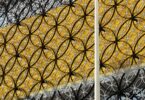In today’s world of fast fashion and environmental concerns, the concept of upcycling has gained popularity as a way to breathe new life into old clothing and accessories. While some see it as a creative and sustainable approach to fashion, others view it as a desperate measure to justify consumerism. This article explores the pros and cons of upcycling, shedding light on whether it is driven by genuine creativity or a response to the urgency of reducing waste.
1. Exploring the Emergence and Rise of Upcycled Fashion
Upcycled fashion has seen a significant surge in popularity in recent years, with more and more designers and consumers embracing the concept of giving new life to old materials. This trend has sparked debates among fashion enthusiasts and environmentalists alike, questioning whether upcycling is born out of genuine creativity or simply a response to the desperate need for more sustainable practices in the fashion industry.
The idea of upcycling challenges traditional notions of fashion production and consumption, encouraging individuals to think outside the box and find innovative ways to repurpose materials. This process not only reduces waste but also promotes a more conscious approach to style. While some may argue that upcycled fashion is a result of necessity rather than inspiration, its growing popularity suggests that creativity and sustainability can go hand in hand in the fashion world.
Key Points:
- Upcycled fashion encourages creativity through repurposing old materials.
- It challenges traditional fashion practices and promotes sustainability.
- The debate between creativity and desperation in upcycled fashion continues to spark discussion and innovation in the industry.
2. Delving into the Environmental and Economic Advantages of Upcycling
Upcycling practices in the fashion industry not only promote creativity but also offer a multitude of environmental and economic advantages. By repurposing materials and giving them new life, upcycling significantly reduces waste and helps in the conservation of resources. This sustainable approach plays a crucial role in minimizing the environmental impact of the fashion industry, which is known for its high levels of pollution and carbon emissions.
Moreover, upcycling presents economic benefits by decreasing production costs and expanding market opportunities. Fashion brands utilizing upcycled materials can stand out in a competitive market, attracting eco-conscious consumers who value sustainability. Embracing upcycling can lead to innovative designs and unique products that cater to a growing consumer demand for ethical and environmentally-friendly fashion choices. In essence, upcycling in fashion reflects a creative and economically viable solution to address sustainability challenges in the industry.
3. Addressing Critiques: Creativity or Desperate Measures in Upcycled Fashion?
In the world of upcycled fashion, there is an ongoing debate regarding whether the innovative designs being produced are a display of creativity or a sign of desperation. Critics argue that upcycling can sometimes come across as a desperate attempt to stay relevant in an oversaturated market. However, supporters of upcycled fashion beg to differ, insisting that it is a form of artistic expression that not only reduces waste but also challenges traditional notions of fashion.
It is essential to recognize that upcycled fashion is not just about repurposing materials; it is about pushing boundaries and fostering creativity in a sustainable way. The ability to transform discarded items into fashionable pieces requires a high level of creativity and vision. While some may view it as a desperate measure to stand out, others see it as a bold statement against fast fashion and consumerism. In the end, whether upcycled fashion is seen as a creative pursuit or a desperate measure depends on one’s perspective and understanding of the industry.
4. Relevant Examples: Successful Fashion Brands Embracing Upcycling
In the realm of sustainable fashion, some successful brands have fully embraced the concept of upcycling to create unique and trendy pieces. These brands serve as shining examples of how creativity can thrive within the constraints of sustainability. For instance, Patagonia is renowned for its Worn Wear program, where customers can bring back used garments to be repaired, upcycled, or recycled. This initiative not only reduces waste but also promotes a culture of longevity and sustainability in fashion. Similarly, Stella McCartney is a pioneer in luxury upcycled fashion, using innovative materials like Econyl, a regenerated nylon made from ocean waste.
On the other hand, some critics argue that upcycling in fashion is merely a desperate attempt to stay relevant in an industry plagued by overconsumption. However, the success of these brands proves that upcycling can be both creative and sustainable. By reimagining waste materials and transforming them into new, exciting designs, these brands are setting a new standard for the fashion industry as a whole.
5. Personalization and DIY: Concrete Fashion Upcycling Ideas at Home
When it comes to upcycling fashion at home, personalization and DIY play a crucial role in turning old pieces into unique creations. Embracing creativity through concrete ideas can not only breathe new life into forgotten items but also promote sustainability and individuality in style. Consider these innovative suggestions for upcycling fashion:
-
Customized Embroidery: Add a personal touch to your denim jacket or tote bag with intricate embroidery designs. This DIY technique not only transforms the garment but also makes it entirely your own.
-
Painted Patterns: Give your faded t-shirts a fresh look by painting geometric patterns or whimsical illustrations on them. This simple yet effective method can revamp your wardrobe in a fun and artistic way.
-
Patchwork Perfection: Combine different fabric scraps to create a patchwork masterpiece. Whether you’re working on a skirt or a pillow cover, patchwork adds texture and color to your upcycled creation.
By embracing personalization and DIY in fashion upcycling, you can elevate your style while reducing waste and embracing sustainability in a creative way.
The Way Forward
In conclusion, the debate over upcycling in fashion remains complex and multifaceted. While some may view it as a creative and sustainable solution to reducing waste, others may see it as a desperate attempt to stay relevant in an industry driven by consumerism and fast fashion. Regardless of one’s perspective, it is clear that upcycling is a trend that is here to stay, challenging traditional notions of what constitutes “fashion” and forcing us to reconsider our impact on the environment. As the industry continues to evolve, only time will tell whether upcycling will be seen as a true revolutionary movement or simply a passing fad.








Leave a Comment